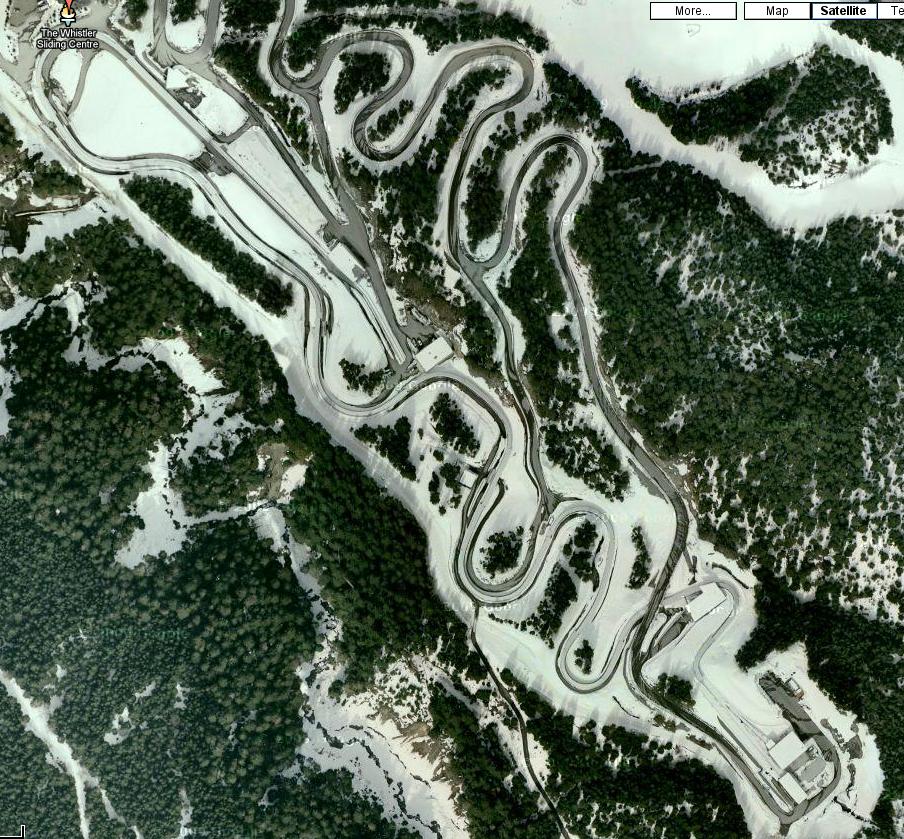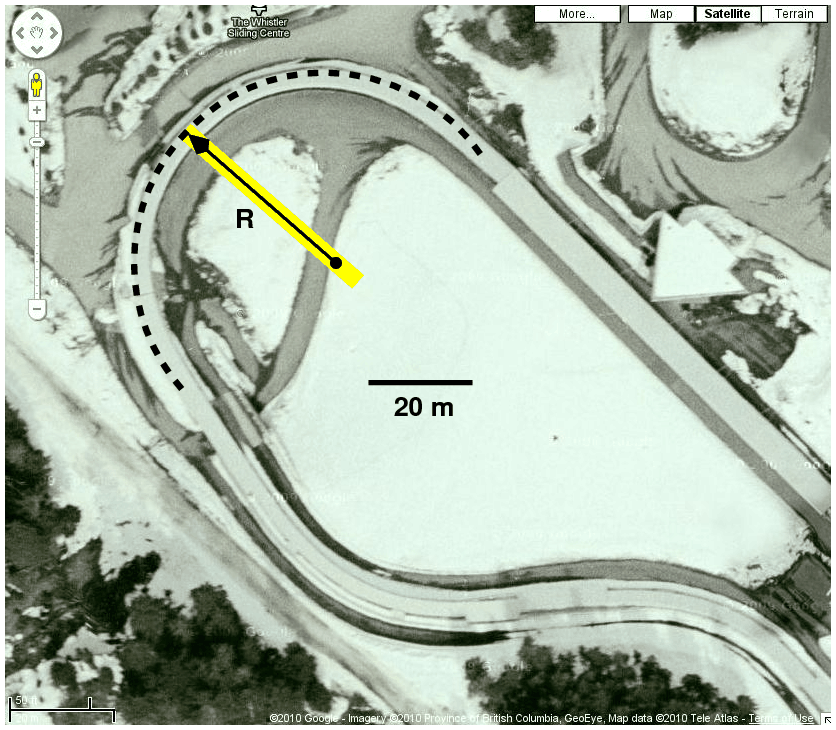
 Copyright © Michael Richmond.
This work is licensed under a Creative Commons License.
Copyright © Michael Richmond.
This work is licensed under a Creative Commons License.
At the 2010 Vancouver games, competitors are sliding down a track built in Whistler, British Columbia. Click on the photo for a picture showing the track's path clearly.
Some details of the luge course on this track (I've made a few approximations, since the best numbers refer to the bobsled course).
Length: 1,374 m Finish Altitude: 786 m Start Altitude: 929 m Number of Curves: 16
Suppose that an athlete of mass 70 kg slides down the track on top of his sled of mass 23 kg.
Here is a closeup of the final turn:

 Copyright © Michael Richmond.
This work is licensed under a Creative Commons License.
Copyright © Michael Richmond.
This work is licensed under a Creative Commons License.